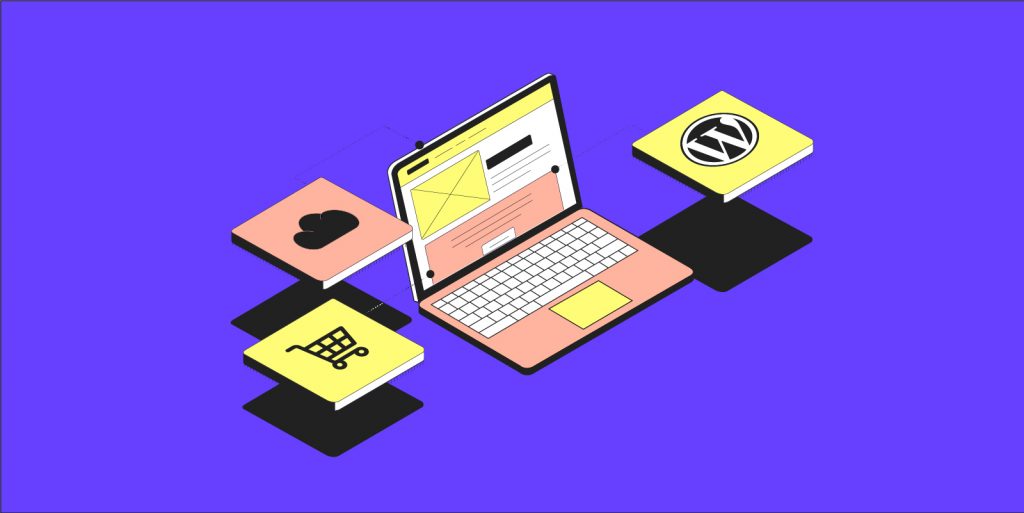Whether you’re just starting your business, you’re just moving to online sales, or you’ve got an established e-commerce business that you want to expand and grow, decided whether to sell your products on Amazon Marketplace is an important decision for small and new businesses.
We’re here to help you decide whether to sell your products on Amazon Marketplace, and show you how to do it.
In particular, we’ll be looking at:
- What is Amazon Marketplace?
- Why you should or shouldn’t sell your products on Amazon Marketplace
- What to do before selling products on Amazon Marketplace
- How to create and set up a Seller Central account to get ready to sell your products
- How to market and fulfill orders on Amazon
What is Amazon Marketplace?
Amazon’s website sells various products that Amazon itself stocks and sends out to end consumers. Listed alongside products that Amazon sells are just as many third-party products that are sold by independent vendors. These vendors use Amazon’s proprietary e-commerce platform, Amazon Marketplace, to list and sell their products.
You don’t need to produce your own product to sell on Amazon Marketplace either. You can also resell products you buy from a supplier on Amazon Marketplace.
Vendors create an account on the Amazon Marketplace portal, Seller Central, upload their product catalogs, and sell their products on Amazon’s website. In return, Amazon collects a portion of each sale in fees.
They also provide the Fulfillment by Amazon service, which lets Amazon Marketplace sellers use Amazon’s logistics system to fulfill orders on their platform.
Why should I sell my products on Amazon Marketplace?
There are a few reasons why you might want to sell your products on Amazon Marketplace.
Greater exposure
The first is exposure. Being listed in Amazon when consumers search for products like yours is a huge potential benefit and can help you reach customers you wouldn’t otherwise reach.
Ease of use
It’s also relatively easy. Amazon provides the platform, you just need to provide the product, description, and pricing.
Keep up with the competition
Your competitors may already be selling their products on Amazon. If that’s the case, you could be missing out on sales your competitors are otherwise capturing.
Why shouldn’t I sell my products on Amazon Marketplace?
On the other hand, there are some reasons you might not want to sell your products on Amazon Marketplace.
Amazon Fees
The first is that a portion of every sale you make on Amazon Marketplace goes to Amazon. If you have a unique enough and valuable enough product, and you don’t have a good way to reach the wide market that Amazon does, that fee is probably worth it. You’ll be able to set your margins high enough to compensate for the added cost of business.
Competition
On the other hand, if you sell products in a fairly saturated market niche, you might find yourself in competition with several other vendors selling similar products. This competition, which you might not face away from Amazon Marketplace, will drive your margins down, a portion of which will always have to go to Amazon.
Especially if you’re a reseller, you should be aware that you may have competitors on Amazon Marketplace who may be selling the exact same product for cheaper.
You can’t sell on Amazon Marketplace
Amazon Marketplace is exclusively for tangible goods, that is, physical products, not services.
Also, certain restricted products cannot be sold on Amazon Marketplace. Prescription medications, alcohol, animals, and weapons are all restricted products. If you sell these products, you won’t be able to list them for sale on Amazon Marketplace, so it won’t be for you.
Lock in
While Amazon Marketplace is an attractive option for new and small businesses to reach more potential consumers, relying too heavily on sales through Amazon limits the potential growth of your business by locking you in to selling on the Amazon Marketplace.
If in the early phases of your business, you are too dependent on Amazon Marketplace for sales, you may not be able to justify the expenses of setting up a separate e-commerce and fulfillment platform, especially if you face competition on Amazon Marketplace and have to adjust your margins accordingly.
Not being able to sell your products independently can restrict your business’s growth and put all of your eggs in Amazon’s basket.
None of this is to say that being an Amazon Marketplace vendor isn’t worth it or is necessarily a bad idea. It’s just important to be aware of the potential pitfalls.
What should I do before I start selling my products on Amazon Marketplace?
There are a couple of preparatory steps you should take before you start selling your products on Amazon Marketplace.
Determine your product category and check guidelines
There are a more than 30 product categories on Amazon Marketplace, each with a different set of rules related to them.
Before you sign up to sell your product on Amazon Marketplace, you should determine which category or categories your product or products fall into and check the selling guidelines for each.
Several categories require Amazon’s approval before vendors can sell products in those categories. For example, products like collectible cards, autographed souvenirs, and works of art all need approval from Amazon.
Determine which items you want to list
Especially if you have a wider range of products, you might want to put some thought into which of products to sell on Amazon and which ones not to sell.
It’s generally a good idea to focus on those items with the best margin or those that have the least competition on Amazon. That way you can maximize the benefit of using Amazon to sell your products.
Choose your plan
Amazon Marketplace has two payment plans: Individual and Professional.
The Individual plan, is geared towards vendors who expect to sell less than 40 items per month, and you don’t want to use Amazon’s advertising. For this plan, Amazon charges $0.99 per item sold plus additional selling fees.
Meanwhile, the Professional plan is for those who will send more than 40 items per month. For this plan, Amazon charges $39.99 per month plus additional selling fees.
These additional fees are referral fees to Amazon for each item sold, which usually represents around 15% of the sales price, as well as delivery fees if they use the Fulfillment by Amazon (FBA) service in addition to the rate for their chosen plan.
Once you’ve done these two steps, you can move on to creating and setting up your Amazon Seller Central account.
How do I create and set up my Amazon Marketplace Seller Central account?
Seller Central is the interface that you’ll use for listing your products, managing your orders, updating your inventory, and viewing reports. You’ll need an account in order to sell your products on Amazon Marketplace.
Creating an account
The first step, then, is to create one. You can do that right from the Seller Central website.
When you create an account, you should also take the opportunity to familiarize yourself with the interface.
Integrating with your e-commerce website
If you sell your products from your website as well, integrating your Amazon Marketplace account with your e-commerce site will save you the step of adding your products to your Seller Central account, and will save you time in the long run keeping inventory and product descriptions updated across your website and your Seller Central account.
If you use a CMS like PrestaShop or WordPress using WooCommerce for your e-commerce website, you can integrate your website with your Amazon account using add-ons.
For PrestaShop, you can use the Amazon Market Place Module for $327.99 for the first year and $98 per year after that to synchronize your inventory, import orders, update and optimize item descriptions, send invoices or terms and conditions, and more.
Host your PrestaShop site with Gandi
If you use WordPress for your website and use WooCommerce for e-commerce, you can connect it to your Amazon Marketplace account with plugins like WP-Lister Lite for Amazon or WooCommerce Products to Amazon Marketplaces.
Host your WordPress site with Gandi
Adding products to Seller Central manually
If you don’t have an e-commerce site or you don’t choose to integrate it, you’ll have to add your products to Seller Central manually.
The Seller Central portal is easy to use and intuitive. You can choose whether you’re reselling a product already listed in Amazon or if you want to put a wholly new product up for sale. For your products to be listed in your account, you just need to follow the steps provided in your Seller Central portal.
Your product names and descriptions might need some adjusting before selling them on Amazon Marketplace. Your product names should be interesting and attractive. Write engaging product descriptions for each of your items that entices visitors to buy your products and add images that help your products stand out from the rest.
How do I sell my products on Amazon with Amazon Marketplace?
Whether by integrating your e-commerce website to your Amazon Marketplace Seller Central account or manually entering your products in the Seller Central portal, once they are ready to go, you can start trying to attract consumers to buy your products.
Marketing your products on Amazon Marketplace
Similarly to your website, you can use keywords to optimize your products’ search performance, you can create ads to advertise your product, or you can promote your product through word of mouth.
One key piece of marketing your products on Amazon is your products’ reviews. Consumers are used to checking product reviews before buying to make sure they’re getting a quality product, so encouraging your buyers to leave a positive review.
You can do this with the “Request a review” button in the Seller Central portal, by including a paper insert that ships with your product, or by including a request to review your product in emails you send to your customers.
Receiving and fulfilling Amazon Marketplace orders
Once you start to attract customers to your products, you’ll start seeing your first transactions roll in. Amazon automatically collects their portion of the sale in fees. They then transfer the remaining total to you on your bank account. Amazon will notify you by email of the orders and you can also see your orders directly in your Seller Central account.
Once you get notified of an order, it’s time to start fulfilling it. If you use Amazon’s Fulfillment by Amazon (FBA) service, they’ll take care of the fulfillment for you.
Otherwise, you’ll need to start the fulfillment and shipping process.
Start selling products on Amazon today
Hopefully you feel more informed and prepared to start selling your products on Amazon Marketplace. But the best way to learn is to just do it! Whether you’re selling your own unique products or reselling products from a supplier, and whether you have an established e-commerce business or you’re just getting started, selling your products on Amazon can be a boost to your sales.
That’s not to say that there are not drawbacks, but if you go into the process aware of those potential downsides, and prepared to mitigate them, you can really give your business a boost as an Amazon vendor.
Tagged in prestashopSMEWordpress



